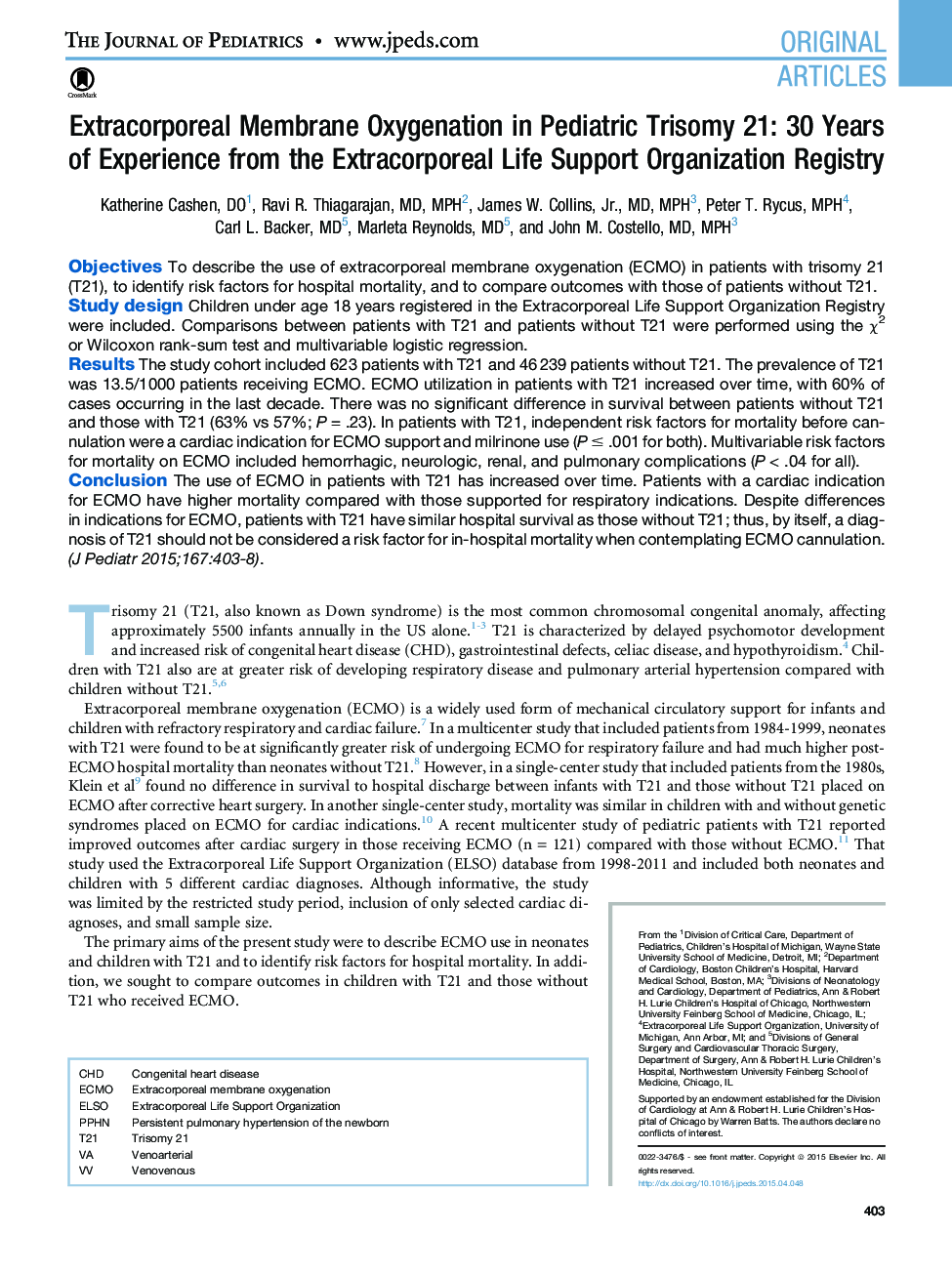| Article ID | Journal | Published Year | Pages | File Type |
|---|---|---|---|---|
| 6220503 | The Journal of Pediatrics | 2015 | 6 Pages |
ObjectivesTo describe the use of extracorporeal membrane oxygenation (ECMO) in patients with trisomy 21 (T21), to identify risk factors for hospital mortality, and to compare outcomes with those of patients without T21.Study designChildren under age 18 years registered in the Extracorporeal Life Support Organization Registry were included. Comparisons between patients with T21 and patients without T21 were performed using the Ï2 or Wilcoxon rank-sum test and multivariable logistic regression.ResultsThe study cohort included 623 patients with T21 and 46â239 patients without T21. The prevalence of T21 was 13.5/1000 patients receiving ECMO. ECMO utilization in patients with T21 increased over time, with 60% of cases occurring in the last decade. There was no significant difference in survival between patients without T21 and those with T21 (63% vs 57%; P = .23). In patients with T21, independent risk factors for mortality before cannulation were a cardiac indication for ECMO support and milrinone use (P â¤Â .001 for both). Multivariable risk factors for mortality on ECMO included hemorrhagic, neurologic, renal, and pulmonary complications (P < .04 for all).ConclusionThe use of ECMO in patients with T21 has increased over time. Patients with a cardiac indication for ECMO have higher mortality compared with those supported for respiratory indications. Despite differences in indications for ECMO, patients with T21 have similar hospital survival as those without T21; thus, by itself, a diagnosis of T21 should not be considered a risk factor for in-hospital mortality when contemplating ECMO cannulation.
